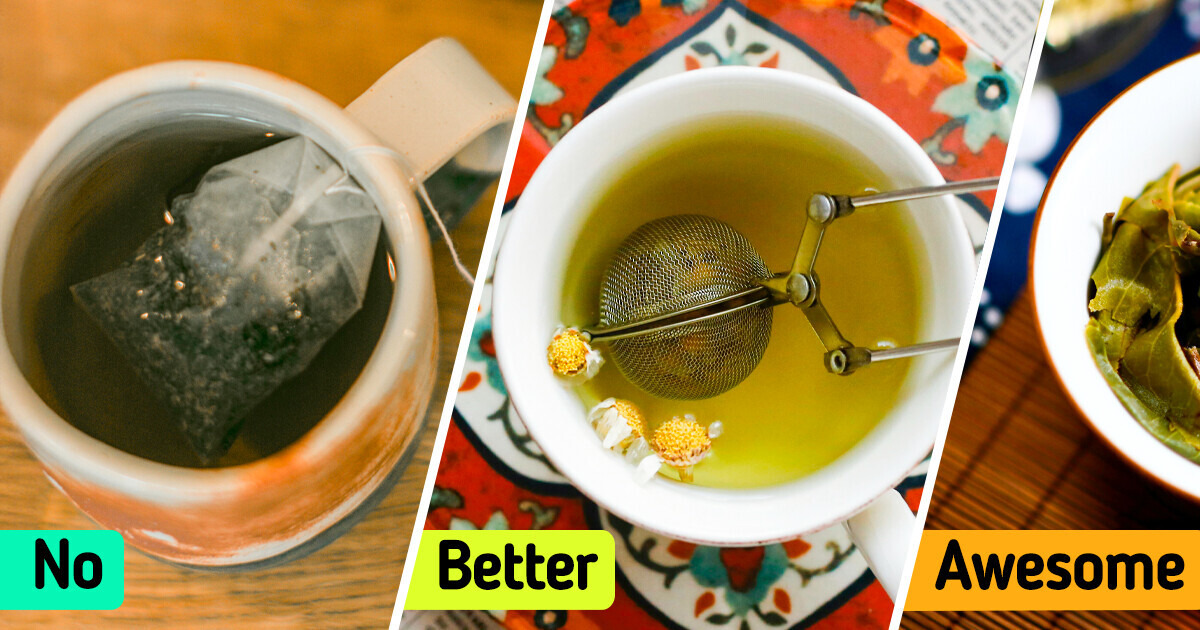19 People Whose Life Will Never Be the Same After Their Vacation


The planet needs our help, and the great news is—you don’t have to be a superhero to make a difference. While environmental challenges might seem big and overwhelming, small actions can have a huge impact.
That’s why we’ve put together a list of 11 simple things we can all do to show we care about the Earth. Let’s jump in and start making a difference today!
Did you know you can grow your own loofah sponges? These natural, biodegradable sponges are a great alternative to synthetic ones. Start seeds indoors in early spring, and transplant them outside after the last frost. By autumn, you’ll have your own homegrown loofahs.
They serve as excellent exfoliating sponges for personal care or cleaning purposes. This practice reduces reliance on plastic-based products and also connects you with the natural lifecycle of your tools.
Promote sustainable fashion by giving clothes a second life. Embrace the charm of vintage fashion by shopping at thrift stores. This way, you will not only find unique outfits, but you will also reduce waste and the demand for new clothing production. Plus, retro is always chic!
Purchase from companies committed to eco-friendly practices. Your spending choices can drive demand for sustainable products and encourage other businesses to adopt green initiatives.
Additionally, consider organizing clothing swaps with friends to refresh your wardrobe without buying new items.
Recycling is one of the easiest ways to help the environment. When you sort and recycle correctly, you save resources and cut down on pollution.
Check your local recycling rules so you know what can and can’t go in the bin. Remember, items like glass, paper, and certain plastics can often be recycled into new products. Your efforts in recycling contribute to a healthier planet for future generations.
Before tossing out old clothes or accessories, see if you can find a new use for them. Repurposing is another great way to reduce waste!
The production of meat has a substantial environmental impact, including high greenhouse gas emissions.
Reducing meat consumption, even just once a week, can lower your carbon footprint. Explore plant-based recipes and discover new favorite dishes. They can be both delicious and eco-friendly. Check out those cauliflower steaks with tahini sauce, pomegranate, and flat parsley above—yummy!
From straws to water bottles, these items often end up polluting oceans and harming wildlife.
Invest in a reusable water bottle, coffee cup, straws, and grocery bags. Opt for beeswax wraps instead of plastic wrap, silicone bags instead of sandwich baggies, and bamboo utensils for on-the-go meals. Swap disposable razors for reusable ones and choose refillable cleaning products over single-use containers.
Think about it—you probably don’t need a plastic bag for that single avocado. Small choices can have massive ripple effects if enough people commit.
Switching to cloth diapers can greatly reduce landfill waste and is surprisingly cost-effective. Modern cloth diapers are designed for convenience, making them just as easy to use as disposables. They are reusable and free from the chemicals found in disposables. Additionally, they’re gentle on your baby’s skin and often more comfortable for infants.
Using reusable cloths for household cleaning or personal purposes minimizes reliance on single-use paper products. While families who adopt these practices save money in the long run and lessen their environmental impact, cloth varieties come with some downsides as well. After all, cleaning them takes a fair share of water and electricity.
Additionally, some cloths, like microfiber ones, can shed tiny plastic fibers during washing, which may end up polluting waterways. Nevertheless, with mindful care and responsible use, reusable cloths remain a sustainable and cost-effective alternative to disposable products.
Next holiday season, consider renting a living Christmas tree instead of buying a cut or artificial one. Companies offer potted trees that are delivered to your doorstep. They are picked up after the holidays and replanted.
The trees will continue growing and absorbing CO₂ year after year. This practice reduces waste and supports reforestation efforts. Great eco-friendly alternative for the festive season.
Using a tumble dryer consumes a lot of energy. Choosing to air-dry your clothes saves electricity and extends the life of your clothes. Indoor drying racks or outdoor clotheslines are excellent tools for this purpose. You can also speed up the process by using a fan nearby to circulate air.
In colder months, place a drying rack near a heat source. This simple change reduces your carbon footprint and lowers utility bills.
Turn off electronics when not in use and consider energy-efficient appliances. This choice offers long-term financial savings as well as environmental benefits.
Turning off lights when you leave a room and unplugging devices when they’re not in use can save energy. It’s a simple habit that makes a big difference—and it’s also a win for safety.
Investing in energy-efficient appliances can reduce your household energy consumption. Look for the Energy Star label when purchasing new appliances to ensure they meet energy efficiency standards.
Many teabags contain plastic, which doesn’t biodegrade and contributes to environmental pollution. Switching to loose-leaf tea eliminates this issue. And it often results in a fresher, more flavorful brew. Investing in a reusable tea strainer or infuser can also make the preparation easy. You can also brew loose tea right in a cup.
This small adjustment reduces plastic waste and, let’s be honest, enhances your tea-drinking experience. A simple yet effective way to make your daily routine more sustainable.
Materials like reclaimed wood, recycled metals, and natural fibers can be used to create pieces that not only look chic but also minimize environmental impact.
Avocado pits aren’t just kitchen waste; they’re an opportunity to create unique, eco-friendly jewelry. Carve, sand, and polish the pits to craft pendants that are as stylish as they are sustainable. A simple string or chain transforms these biodegradable beauties into statement pieces.
Remember, every eco-friendly choice you make contributes to a healthier planet. Let’s lead by example and inspire others to amp up their green game.











